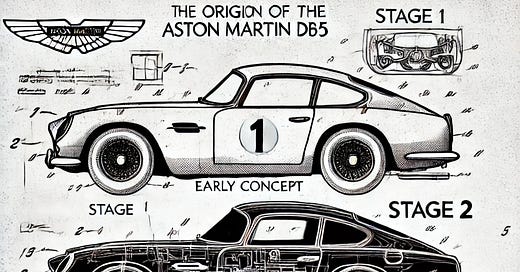Bulletproof Patents - The Origin Story
How AI forced me to rethink the art of patent drafting
When I began my career as a contentious patent lawyer, my day job was all about bursting patents.
I was one of the lawyers involved in the series of patent cases around Novartis's anticancer drug Glivec that culminated with the decision of the Supreme Court in Novartis v. Union of India, and the revocation of the patent. I had just graduated from Trinity College, University of Cambridge and was thrilled to use my newly gained knowledge about the Dispute Settlement mechanism of the WTO in the case. Novartis lost its patent due to a newly introduced procedure popularly known as the "pre-grant opposition" which allowed competitors to challenge patents before their grant. The new amendments to the Patents Act also provided for a long list of grounds on which patents could be challenged.
While working on the Novartis cases, I authored a book on the new patent regime published by LexisNexis, The Law of Patents. I was also involved in a host of patent challenges before the Patent Office and the appellate courts, mostly bursting patents that couldn't withstand a rigorous scrutiny. I even ended up writing another book specifically on the technique of challenging patents, The Touchstone Effect. Occasionally, I was also summoned to defend patents.
I was so enamored by the work I did, I took off to the United States to pursue a Ph.d. on how patent law reforms can promote access to medicines. Again, the theme of challenging patents was central to my thesis. You see, there is a direct correlation between patent protection and drug prices. The prices drop precipitously when the patent is revoked or when it expires. I graduated with a doctorate degree from Duke University and my thesis was published by Oxford University Press as a book, The Access Regime.
I returned from the U.S. to join IIT Madras as its first IPR Chair Professor. Here, I got involved in something I never expected to do as a contentious patent lawyer. I was teaching students who had no legal background a course on creating robust patents. My courses are now available on the NPTEL platform, including Patent Law for Engineers and Scientists and Patent Drafting for Beginners. More than 100,000 students have enrolled for these courses.
I would like to think that my stint as a patent lawyer challenging patents gave me a different perspective in teaching my students how to draft patents that cannot be easily challenged—a bulletproof patent.
What is a Bulletproof Patent?
A bulletproof patent is a patent that is so clearly and comprehensively drafted that they protect the invention’s unique value, satisfies all the requirements and preempts potential objections from the start. Though the idea of bulletproof patents has existed in popular culture, neither my books nor my courses have covered the nuances of drafting them. Patent prosecution is like a bullet-dodging exercise—your patent must fend off attacks not only from the patent office but also from third parties. Our motto is: Don't Dodge Bullets, be Bulletproof.
This newsletter was triggered by the introduction of game-changing AI tools for patent drafting and prior art search. I have seen the promise of some of these developments involving AI and I think there is now a need to teach patent drafting with a new approach incorporating these tools. With these tools and some support from this newsletter, I think anyone can draft bulletproof patents.
This weekly newsletter will explore topics around drafting bulletproof patents. The art of drafting patents, in its simplest abstraction, is nothing but creative writing. I hope that answers the question: Why a Substack Newsletter?
Anyone who is interested in drafting patents—as inventor, would-be inventor, startup founder, small-business owner or a patent agent who wants to get better in the craft—will benefit from this newsletter. I hope to be the biggest beneficiary of what comes out of this exercise, as this will allow me to engage with a larger audience, test drive the new AI-enabled technologies for prior art search and patent drafting and experiment with new forms of learning and teaching.
Notes:
The Law of Patents - With a Special Focus on Pharmaceuticals in India https://www.amazon.in/Patents-Special-Focus-Pharmaceuticals-India/dp/8180381501/
The Touchstone Effect: The Impact of Pre-grant Opposition on Patents https://www.amazon.in/Touchstone-Effect-Pre-Grant-Opposition-Patents/dp/818038554X
The Access Regime: Patent Law Reforms for Affordable Medicines https://academic.oup.com/book/25342
Patent Law for Engineers and Scientists https://nptel.ac.in/courses/110106081
Patent Drafting for Beginners https://nptel.ac.in/courses/109106128
If you have already subscribed, thank you. Consider forwarding this to your friends (or fellow patent agents) who may be interested.
If you are one of my 50,226 students who have enrolled in the *Patent Drafting for Beginners* Course, you need to know what has changed since launching our Patent Drafting Course.
You may have more questions. Some of them are answered in the FAQ section in About. If you have more, please post them here in the comments section.





Professor Feroz Ali is an outstanding teacher. I have read all his books and learned patent law through his online courses. His vision is remarkable—if he says bulletproof patents are here and AI is the key, he sees the future clearly. While many keep AI-driven patent drafting knowledge to themselves, he shares it selflessly. I wish him a long, healthy life and hope to remain his student forever, continuously learning from him.
Dr. Alok Gupta
Patent Agent, Muzaffarnagar, UP
Author (The Dustbin Diaries)